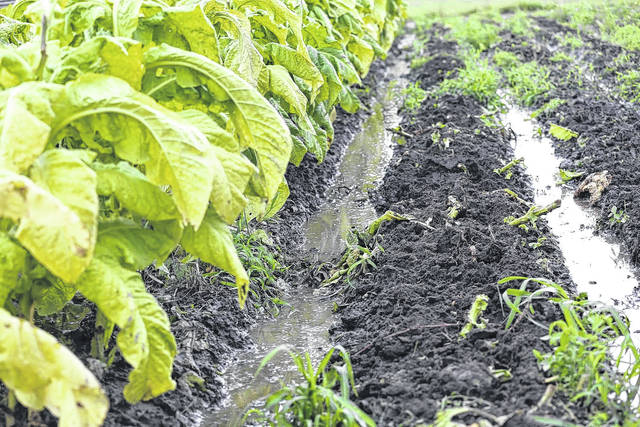Current wet weather conditions, brings increased chances for disease to develop and thrive in row crops. This season we have had ample amounts of rainfall, heavy at times. We have also encountered periods of drought and this has occurred since spring. In one way or another some crop or crops can be affected in a negative manner. I have a corn variety trial that was planted in a timely manner, however from the time it was planted in early April up until now, it has received over 23 inches of rain with some of the crop being under water for periods of time. Harvest is underway, so we will have to wait and see how it all pencils out.
Since we are approaching pod development in soybeans, this crop has struggled as well. All this wet humid weather is like an alarm clock for disease. Some diseases that are showing up thrive in these conditions.
A non-typical disease that has been showing up this season is Sudden Death Syndrome (SDS). It’s a type of Fusarium that is influenced by wet weather conditions. With this disease, plants will exhibit interveinal chlorosis and necrosis. The vascular tissue will have a light brown appearance when you split the stem. Unfortunately, the plants will not benefit from a foliar fungicide application. Improving soil drainage and reducing soil compaction where feasible can help.
Frogeye Leaf Spot is a foliar disease that has been seen around the county this season. With this foliar disease, circular or angular lesions develop on the leaf surface. Typically, the lesions will be gray in color with reddish to purplish boarders. The first step in prevention would be to utilize resistance varieties, certified disease-free high-quality seed. Of course, crop rotation is also an important part in reducing residue buildup that can harbor the disease. During unfavorable weather conditions, just as we have recently been experiencing, may influence the use of foliar fungicides at growth stages R2 and R5 to protect the plant’s canopy.
For more information about soybean production and issues, please visit https://content.ces.ncsu.edu/north-carolina-soybean-production-guide


